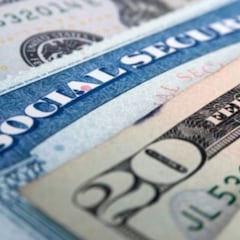How does the drop in interest rates affect credit card users?
The recent Federal Reserve rate cut will affect the cost of repaying credit card debt, which has been growing in recent years.


The recent Federal Reserve rate cut is important for credit card users, particularly those grappling with high-interest debt. While the immediate impact may not be dramatic, this shift in monetary policy could bring some relief to cardholders in the coming months.
The Fed’s benchmark rate serves as a foundation for the prime rate, which in turn influences the annual percentage rates (APRs) set by credit card issuers. As a result, the rate cut is likely to translate into at least some reduction in credit card interest rates, although it will be very small.
For example, with the Fed implementing a 25-basis-point cut to its benchmark rate, cardholders might see a corresponding decrease in their credit card APRs when a new agreement is struck. However, APRs are not as closely linked as mortgage rates are to the Fed’s base rate while also being much higher. Federal Reserve data puts the average credit card interest at 22.76%, while mortgage rates are around 6%
Credit card issuers are typically quick to raise rates in response to Fed hikes but tend to be more sluggish when it comes to lowering them.
Credit card debt in the US
The amount of credit card debt in the United States has been volatile since 2020. Four years ago, credit card balances plummeted from $927 billion in Q4 2019 to $770 billion in Q1 2021 as consumers used stimulus payments to pay down debt and reduced spending during lockdowns.
The average 🇺🇸 American household owes $10,000 in credit card debt, $58,957 in student loan debt, $241,840 in mortgage debt and $22,612 in auto loans according to a survey by PolicyGenius.
— The Spectator Index (@spectatorindex) August 23, 2024
Related stories
However, starting in Q4 2021, credit card debt began to surge, fueled by post-pandemic spending, inflation, and rising interest rates. By the next quarter, credit card debt reached an all-time high of $1.142 trillion, surpassing pre-pandemic levels by $215 billion.
The average American credit card debt rose from $5,315 in 2020 to $6,501 in 2023, a 22% increase. For those with large debt, any rate reduction when they can find a new agreement is a positive.


Complete your personal details to comment